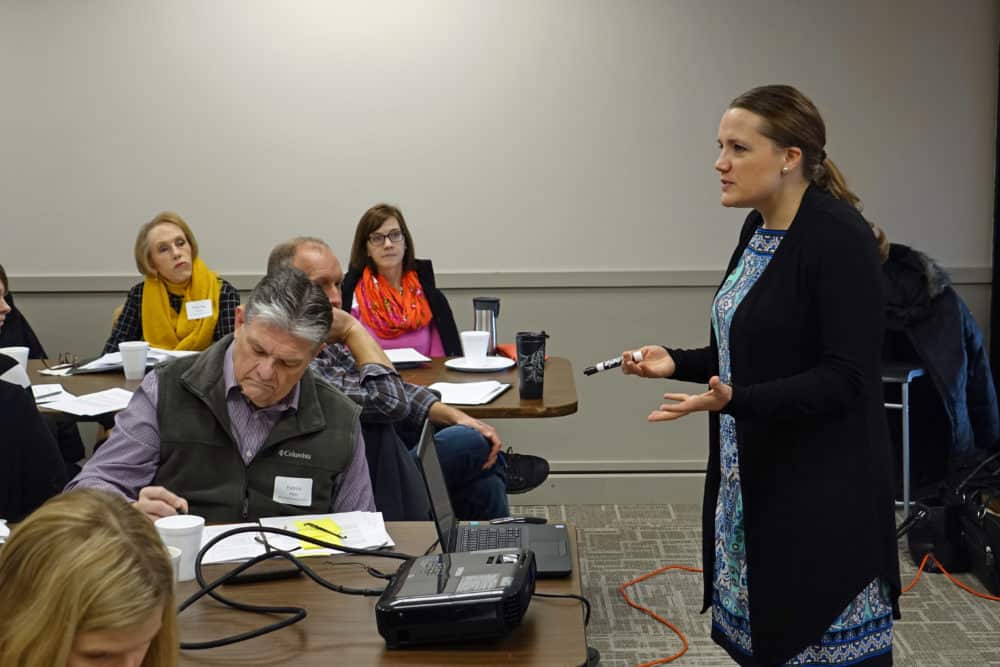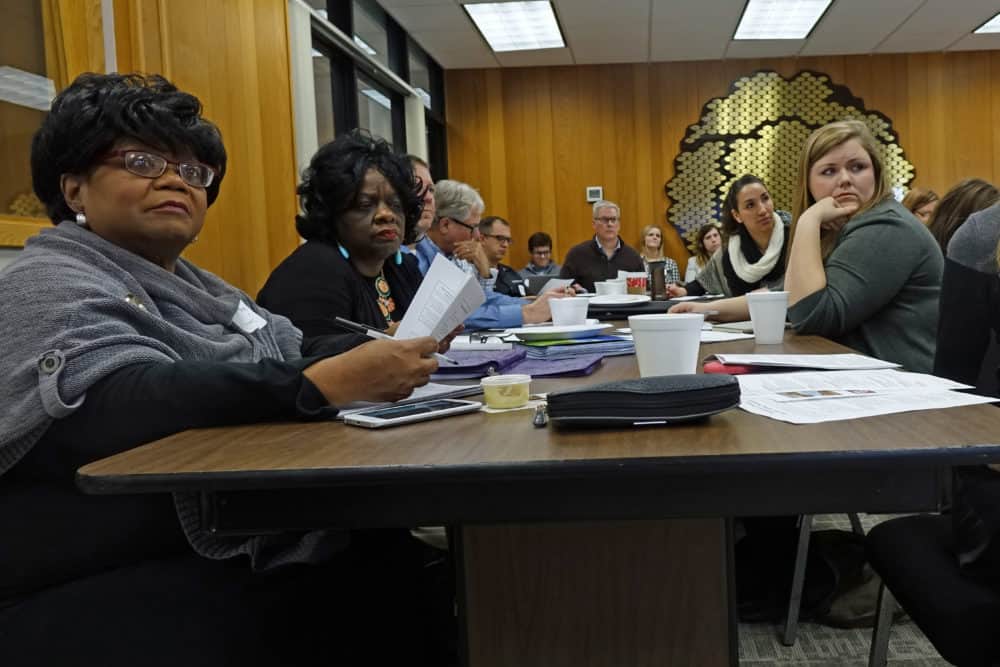Helping Faith-Based Nonprofits Navigate Private Foundations
 Alisha Cora Soule taught a packed-out room full of nonprofit leaders on how to Find Funding and navigate the landscape of grants in the U.S. and Minnesota. Soule is currently the Director of Grants and Strategic Projects for the University of Northwestern St. Paul.
Alisha Cora Soule taught a packed-out room full of nonprofit leaders on how to Find Funding and navigate the landscape of grants in the U.S. and Minnesota. Soule is currently the Director of Grants and Strategic Projects for the University of Northwestern St. Paul.
Overview of Grants
“The government provides grants, but it is an agony to get them. They are big grants, but they are highly-competitive. I urge you to focus on getting funding from private foundations,” said Soule.
A few good sources for grants are from Professional Associations, Consortiums, and Denominations.
U.S. Foundations
There are over 86,000 foundations in the United States; that means in the U.S. over $54 billion is given out in grant money.
-
- 95% of them are private foundations
- 3% are corporate foundations
- 1% is community foundations
“Where do you want to spend a lot of your time? In private foundations,” answered Soule.
Minnesota Foundations
 There are about 1,450 foundations in Minnesota; that means in Minnesota, $1.6 billion in grant money is given out each year.
There are about 1,450 foundations in Minnesota; that means in Minnesota, $1.6 billion in grant money is given out each year.
-
- 84% are private foundations
- 9% are corporate foundations
- 7% are community foundations
“I also want to point out, that $4.1 billion dollars is given away by individuals, and a lot of those individuals are Christians. How important is it that you are connecting with individuals that God has given resources to, that might feel passionate about the work your organization is doing, and passionate about giving it away in order to prosper your organization?” said Soule.
How to Find Funding
- Assess Existing and Past Funding
“When I have gone back, it has reaped a lot of benefits,” said Soule.
-
- Research who is currently giving a grant to your organization, or who has given a grant to your organization in the past.
- Research who you have submitted to but have not received funding from.
- Compile a list of these Foundations/Donors, then assess each one.
- Determine the relationship needs, if there is a MISSION FIT, and ATTEND to these foundations/donors before you bring in new ones.
- Get Connected to the Right Information with the right national and local resources.
- Research Potential Funders and Prioritize
- Connect, Build, and Maintain Relationships
Grant Components
In Minnesota, there is a wonderful tool for organizing and writing a proposal: MN COMMON GRANT FORM.
Cover Letter (write your own)
Cover Sheet/Application (fill out using MN CGF)
Proposal Narrative (follow instructions using MN CGF)
Budget (fill out using MN CGF or provide a copy)
Attachments (see list of documents on MN CGF)
How to position your faith-based organization for Christian Funding and Secular Funding:

 To decide which grants to apply for, think about your non-profit through the proper lenses.
To decide which grants to apply for, think about your non-profit through the proper lenses.
“Many faith-based nonprofits provide amazing services. Therefore they can seek funding from Christian and non-Christian foundations. You have to think about your organization from the correct perspective,” said Soule.
To distinguish if your Christian nonprofit can apply for secular funding, ask yourself these two questions:
-
- Can clients participate in your services without being required to participate in or engage in Christian/spiritual activities?
- Is your organization/program open to all individuals regardless of ethnicity, faith, sexual orientation?
If you can answer yes to both questions, you can likely apply for secular and Christian funding. If your answer is no, you likely need to focus on Christian funding sources.
“Funders recognize that everyone is a whole person. Funders even on the secular side of things recognize everyone has a spiritual aspect to their being, even if it isn’t necessarily Christianity. Try to reach your funder where they are at,” said Soule.
Even secular funders recognize that attending to the spiritual aspect of an individual is crucial. So when you think about writing grants, an angle in which you can take is to write about your holistic approach, and what you are doing for your clients to help the whole person.
“A lot of secular people don’t understand Christianity or its language. You need to use their language that is on their website, language that is on their grant guidelines. Your job is to maintain your integrity with the mission and purpose, while using the language and tone that the funders are using to describe your services,” said Soule.
